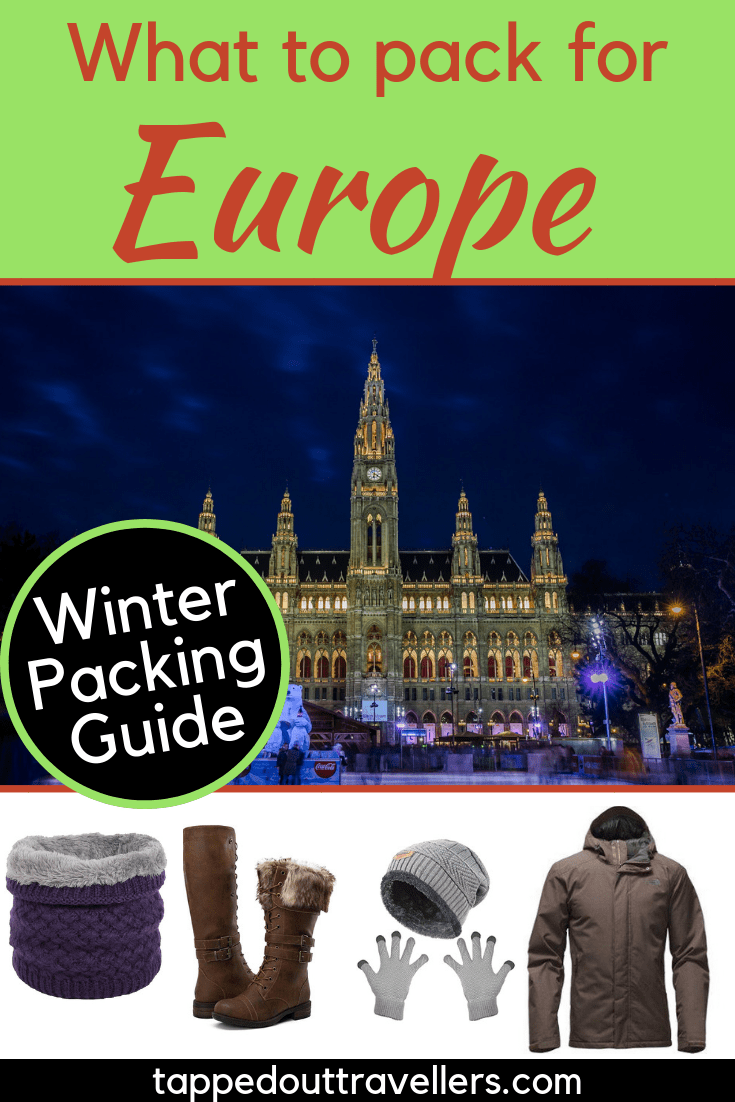Last Updated: August 4, 2025

Winter Travel Gear for Europe: Our Top Budget-Friendly Picks; Looking for reliable winter gear that won’t break the bank? We’ve rounded up our favourite tried-and-tested essentials to keep you warm, dry, and comfortable while exploring Europe in the colder months.
A Guide To Essential Winter Packing List Ideas…
What to Wear in Europe for Winter
Curious what top travel bloggers pack for Europe? Or what do you need to wear across such a diverse continent? After years of trial, error, and weather-induced wardrobe regrets, I’ve finally created the ultimate list of must-have travel gear.
Europe’s cities aren’t one-size-fits-all—some are chilly and damp, others sunny and dry, and a few like to throw all four seasons at you in a single day. Snow in the morning, rain at lunch, blazing sun by dinner, and wind that’ll undo your umbrella? Been there. That’s exactly the kind of unpredictable vacation we’re here to help you prepare for.
To which I earn a small commission, at zero cost to you!
Find more info in our Privacy Policy.
Basics
Whether you’re toting a diaper bag or just a camera and snacks bag (lucky you, child-free for the day!), always pack a hat, scarf, and gloves. A warm wool hat that covers your ears properly is non-negotiable.
For the kids, I prefer neck warmers over scarves—they don’t fall off, can’t be easily fiddled with, and won’t get jammed in a zipper. Plus, a good-quality neck warmer is long enough to pull over their heads for an extra layer of warmth.
As for me? I love a good scarf. It’s the one fashion accessory I can justify while travelling: it keeps me warm, adds personality to my outfit, and depending on the style, can completely change the look. I usually pack a few or pick some up at souvenir shops—because honestly, a splash of colour never hurt anyone.
Layers
Layers are your best friend when travelling. It’s always easier to peel off a layer than to magically create one—or worse, be forced to buy an overpriced hoodie in desperation. On especially cold days, I dress everyone in a long-sleeve shirt, a warm sweater, and a proper jacket. This base setup lets us adapt quickly to changing temperatures without sacrificing comfort—or our travel budget.
Gloves
Let’s be honest, not all gloves are built to survive a full trip, so don’t get too emotionally attached. I have a nice pair of leather driving gloves that never leave the house or hotel room. Why? Because I have a terrible habit of misplacing things. (Case in point: I left my brand-new sunglasses on an airport table two weeks after buying them.)
For everyday wear, I swear by the $1 gloves from Walmart or Target—they do the job. Look for a pair with leather patches on the thumb and forefinger for touchscreen use. Super handy when navigating maps or snapping pics on your phone.
These gloves also come in kids’ sizes (roughly 6–10 years old), but here’s a trick: toss them in the wash and tumble dry them—voilà, instant infant-sized gloves. Perfect for toddlers who want to feed themselves or hold their drink without help. My kids hate mittens—too much work.
I always pack an extra set of hats, gloves, and scarves for each kid and leave them at the hotel. If something gets lost while we’re out exploring, there’s a backup waiting for them—no stress, no shopping detours.
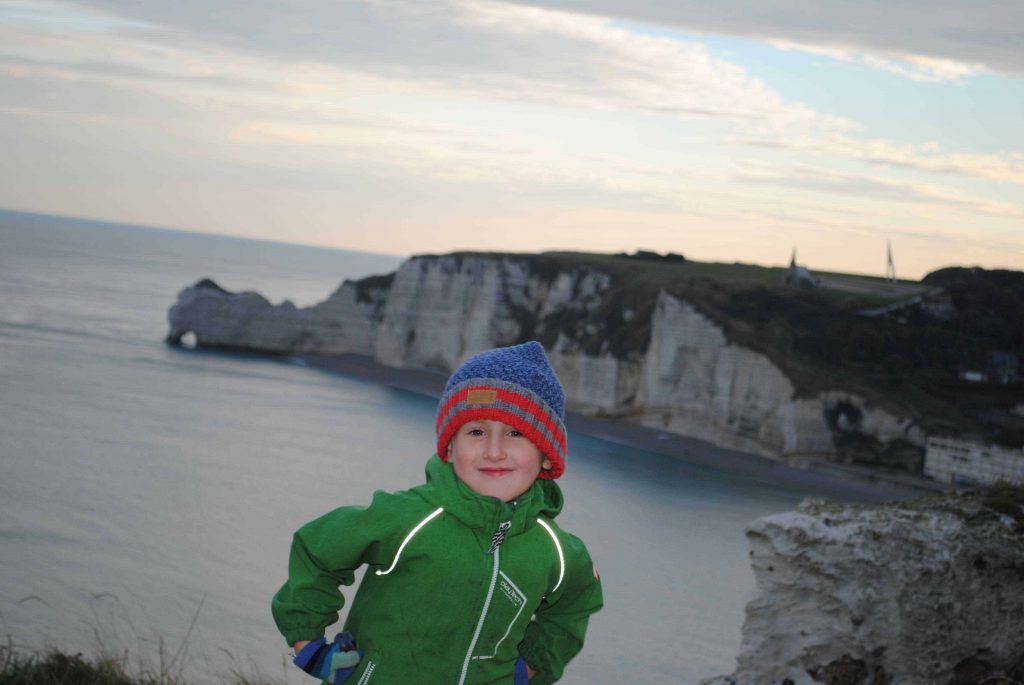
Feet
A solid pair of waterproof shoes is non-negotiable for any trip—anywhere. You don’t want to be the person lugging around five pairs of shoes “just in case.” Finding footwear that’s fashionable, functional, and affordable is tricky, but totally worth the effort. While some practical shoes may not win style points on their own, the right accessories can tone down the “tourist” vibe fast.
Because let’s face it—the first rule of travel safety is don’t stand out. You’re already carrying a suitcase and a camera; no need to add “rob me” signage with flashy or ill-suited footwear. Once your luggage is tucked away and your camera’s discreetly stashed in your day bag, your shoes shouldn’t be what gives you away.
We’ve tested more than a few pairs over the years, and these current picks are our top favourites. Yes, they’re a bit of an investment—but I’ve worn mine for eight months out of the year for nearly three years, and they still look brand new. That’s a value that earns its space in the suitcase.
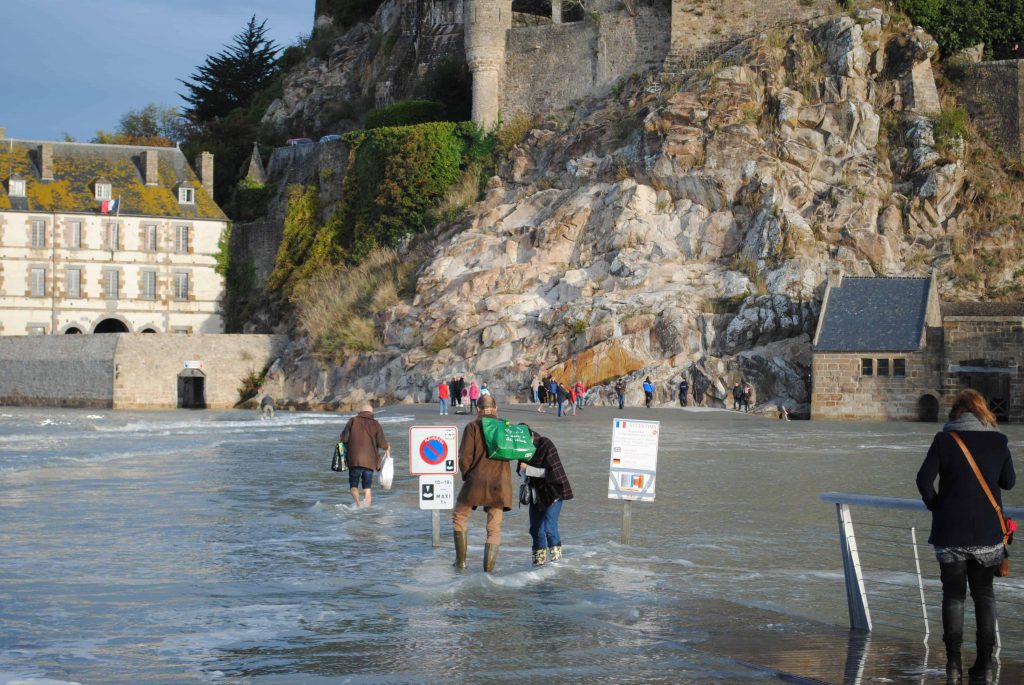
Your Top Half
- Thermal top and Underwear
- 3-4 tops
- 2 sweaters
Because sweaters are bulkier than cardigans, try to wear large items in transit to free up precious space in your luggage
When layering your clothes, be sure to have a warm layer, followed by a “presentation layer” as some have come to call it. This is what everyone will see when you take off your coat in the restaurant. I don’t make that distinction since my closet is filled with mom clothes – I haven’t done a serious update since before my son was born… and he’s almost 5. Sometimes I will change it up for a t-shirt and a pull-over sweater if it’s truly cold.
Jacket
Like most of us, I have several jackets hanging in my closet—and I’ve traveled with every single one. Yet, I’ve sworn each of them off at some point. My big winter coat is a ski jacket: warm enough, but bulky and uncomfortable for sitting in the car. My fall/spring coat doesn’t leave room for layering and isn’t waterproof. Then there’s my windbreaker/rain jacket, which offers zero warmth.
Recently, I discovered the Columbia interchangeable jacket—and it’s a game changer. This 3-in-1 system combines a waterproof shell with a warm, removable insert. Wear them together with a light sweater, and it functions perfectly as a winter coat. It’s much slimmer, easier to move in, and—best of all—less likely to scream “tourist.”
Your Bottom Half
- 1 Black pants
- Everything matches with black, and you never know when you need to dress something up for a surprise night out.
- 3-4 Jeans
- Winter boots
For the love of travelling, don’t wear yoga pants. They are thin and retain water. You get wet and you will stay wet for the rest of the day. Layering leggings under your jeans is a much easier way to stay warm and fashionable. Feel free to substitute jeans for trousers but trousers are thinner so keep that in mind as well.
Bottoms
Waterproof bottoms are always a good idea. While one would assume throwing on a pair of ski-pants is the answer, it really depends on the weather and destination. Ski pants are very bulky and very warm, which is great when you are flying down a mountain, but exploring a city? Not really. We all have a pair of thermal splash pants that we wear when travelling. Just like the pair you wore to jump in puddles as a child, these just go over your clothes and act as a windbreaker and water repellent. The thermal lining also means you can stay warm without all the bulk. They are fairly easy to find at any outdoor apparel store.
For the stationary child sitting in the stroller, it can get much colder, much faster, than those walking around and burning energy. A good foot-muff or winter sack is needed. We used a thick blanket when we travelled with just our son but he was much older and knew not to throw it off. Our daughter, on the other hand, will throw it away then cry that she is cold. The Foot-muff zips around her like a sleeping bag so she can’t take it off. Too warm, unzip parts of it for some air circulation, or unzip it completely and store the top half until needed. There are many brand names you can use, as well as the one designed for your specific stroller. We went with the cheap one and modified the strap holes to fit our own needs.
Baby
The age of your child will dramatically affect the type of baby gear you plan to bring with you on vacation. The destination will also help make the final decision. Our trip to Switzerland meant the stroller never left the car, just not possible to bring it into a castle or up the mountain. Munich, on the other hand, I needed my stroller, and the kids needed weather protection. These are my recommendations, whatever you choose… note; I brought it all to Normandy, it was just that kind of vacation.
This is the new version of the carrier we have. Ours was a gift, and they received it as a gift, so it is fairly old, but looks new. We have used it a handful of times and plan on using it more often. The high weigh limit (23kg or 50lbs) means I can, in theory, wear either child on my back while the other runs around.
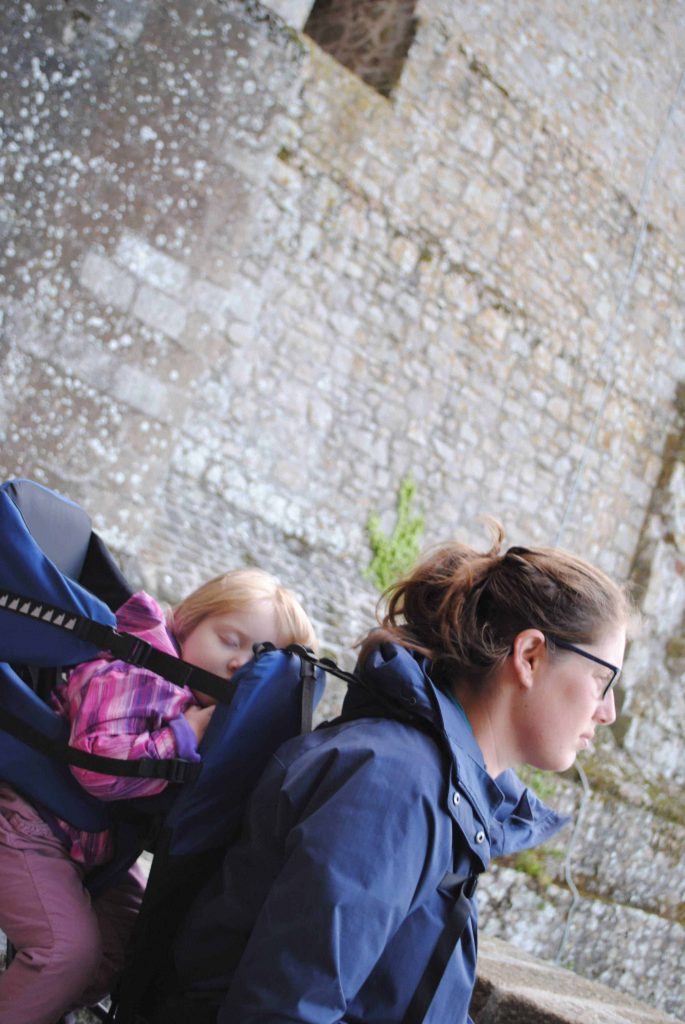
Meet Bob.
Bob is my favourite. Bob was expensive. And Bob has never let me down. Seriously—have I mentioned how much I love Bob?
Over time, we’ve added to the Bob Gear ecosystem: the rain cover, handlebar console, travel bag, and car seat adapter. Are these accessories necessary? Not strictly. But worth it? Absolutely.
Let’s start with the rain cover. Yes, you can grab a generic one at Walmart—we have. But those flapped around in the wind like a cheap poncho and drove me nuts. When ours finally tore, we upgraded to the branded Bob Gear version and never looked back. It fits like a glove and stays put.
The handlebar console is a must for me: it holds snacks, coffee, phones, house keys—all the essentials within arm’s reach, no more digging through the diaper bag mid-stroll.
Then there’s the travel bag—a lifesaver if you’re flying. Bob is roughly the width of a standard wheelchair (which, legally, means he fits through doorways), but not all airlines will let you gate-check him. And even if they do, it’s at your own risk—airlines won’t cover any damage. The travel bag keeps everything packed securely, with the wheels detached and the frame protected. We use the bag when Bob needs to be checked as oversized luggage. If he’s gate-checked, we leave the bag behind.
Finally, my personal favourite: the car seat adapter. We bought Bob when our son was 8 months old and used it as-is. But when Baby Girl arrived, I didn’t want to shell out for another stroller just for the newborn stage. The adapter let me click the existing car seat right into Bob and go. Seamless transitions from car to stroller made travelling infinitely easier.
So yeah—Bob may have been a splurge, but he’s earned his keep every mile of the way.
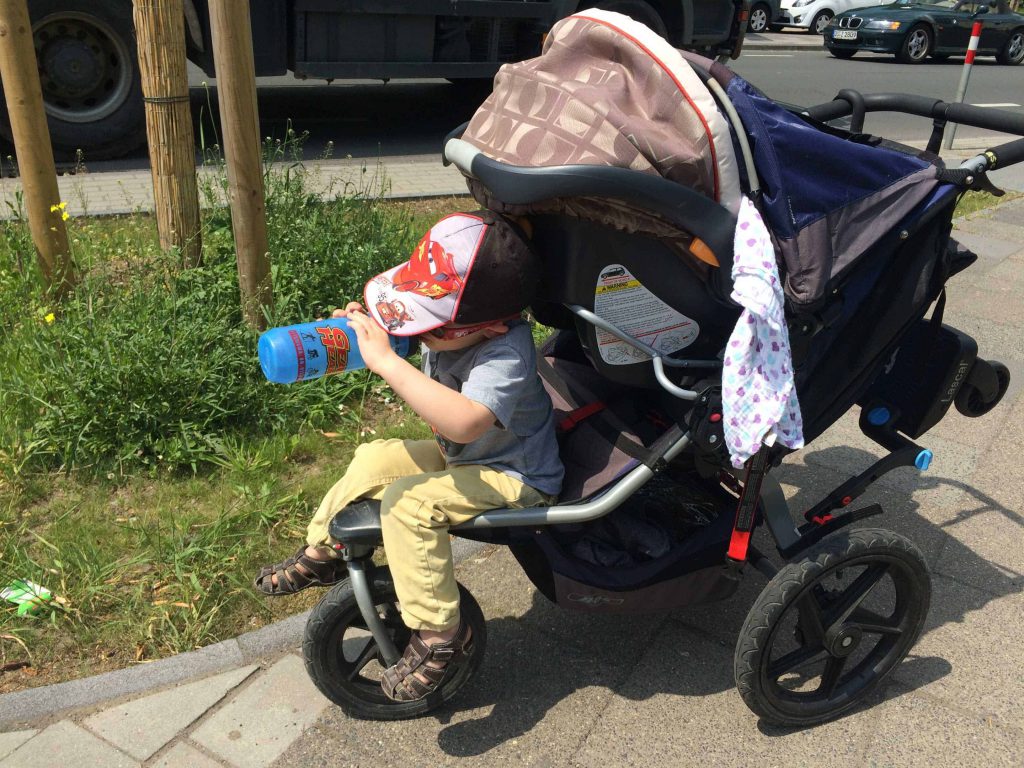
Lastly, the infant carrier. When the baby is too small to fit in the MEC hiking carrier, and you still need to carry them around, the Rose and Rebellion carrier is perfect.
This carrier can be used up to 32 lbs. We have used it for both kids, and now my sister is using it for her kids; recycle, recycle. When the baby is finally too heavy to carry on your chest, the carrier converts to a back harness, which I have used a few times. We store this in the basket under the stroller at all times, and it comes with a great bag; if she gets restless sitting there all day or munchkin gets sore legs, I wear her and he gets to sit.
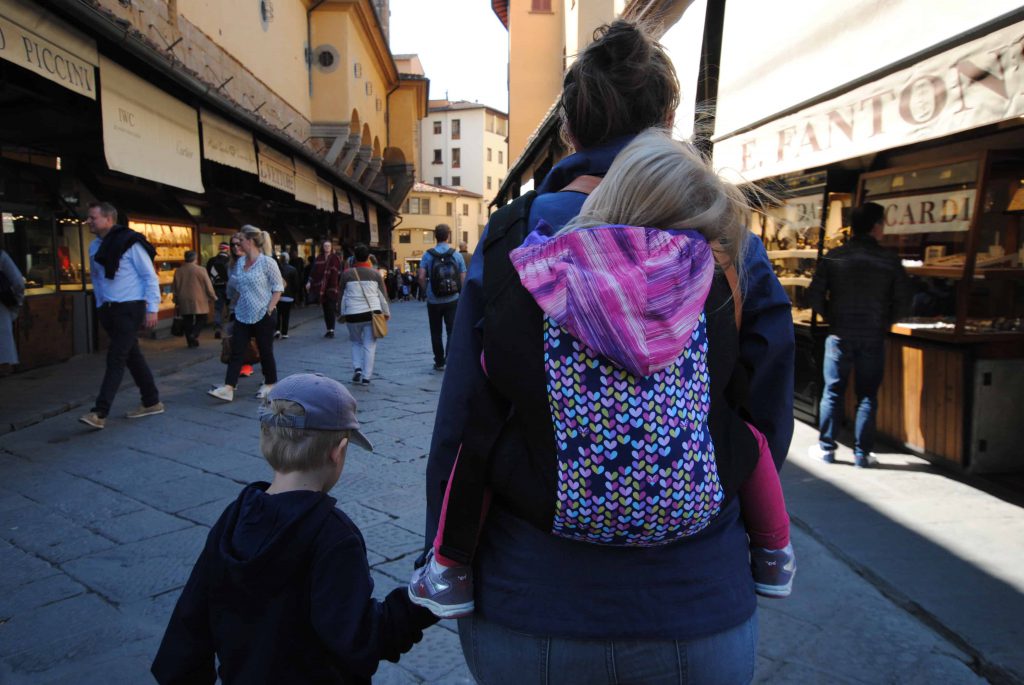
There are varying styles of covers for this as well, like adding a blanket on the baby during the colder months. Since I preferred to have the carrier directly on me while she was on my front, instead of over my jacket, it meant my jacket was half-opened in the middle of winter. The cover also filled in some of that gap to keep the cold air out of my jacket. Clearly, a blanket wrapped around my midsection would have the same effect but it was a gift, so I enjoyed it.
Backpack
Having a proper way to carry your belongings while still being weatherproof is important. I won’t always have the stroller and I really shouldn’t be lugging that much useless gear anyways. If it belongs to the parents, it needs to fit in the bag or it doesn’t need to come. Camera, umbrella, wallet, tripod, snacks, drinks; also a free place to store souvenirs without standing out in the crowd. This is also where we store the basics when they are not in use; the bottom of the stroller is not for loose items.
This particular bag has a chest strap to keep the whole thing from swinging around when walking, which is great, and comes with a water cover. The side straps also carried the tripod and umbrella.
Sunglasses
Snow blindness is real, and trust me—you don’t want it. Snow reflects sunlight like a mirror, so sunglasses are a must, even in winter. I make sure everyone, including the kids, has a pair on hand. You never know when the clouds will part and the sun will hit you full-force.
And there you have it—what to wear in Europe to survive a European winter. It’s not nearly as cold as people make it out to be, but it is exactly as wet as you’ve heard. Europe rains. A lot. And often. So yes, even in February, always pack an umbrella.
Asking a local what to wear might give you wildly different answers—what’s “cold” to them may feel mild to you, or vice versa. In reality, your best bet is advice from someone from your part of the world who’s already been to your destination. That’s the most reliable gauge for knowing what to pack—and what you can safely leave behind.
Your Thoughts...
Please share your thoughts in the comments or reach out on social media...We would love to hear from you.
You May Also Like…
- Do you need a stroller to travel
- Guide to Best Travel Strollers
- Best Travel Shoes for Women
- Best Packing Tips to Feel More Organized + Less Stressed
- Family Travel Gear Product Review
- Nuremberg for Christmas
- Winter Road Trip Safety Tips
